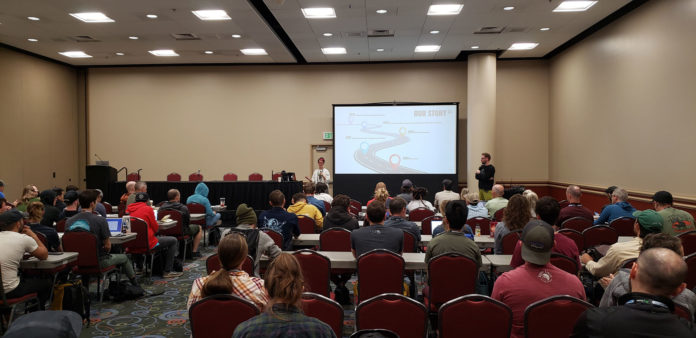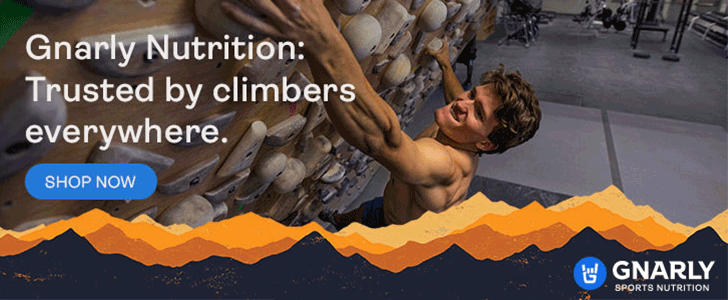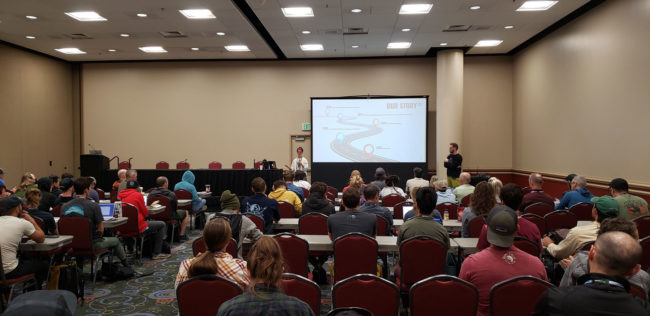
At long last, professionals in the indoor climbing industry gathered again. The 2022 CWA Summit was destined to be a highly anticipated event following two years of cancellations and a schedule that aligned with several IFSC World Cups. The pent-up energy was palpable, and the new venue in Salt Lake City―after all prior editions of the Summit being held in Colorado―brought a fresh experience.
The Summit is always a great place to catch up with old friends and make new ones, hear a bit of history from grizzled veterans, feel the psyche from dreamers of new climbing facilities in development, and see a vision of the future from innovators and leaders of our pack. It’s a place to learn new strategies to improve your business and be exposed to new products and services that can elevate your facility. This year’s event had all that.
With such a huge number of presentations and exhibitor booths, it was impossible for any one person to take it all in. So for CBJ’s coverage this year, we decided to ask our team in attendance to answer one question, from their perspective, based on their values: What did you learn, and what does it mean for the future of indoor climbing? The responses you’ll read below run the gamut, representing the varied backgrounds and interests of our team. (Scroll down or click on the links below to navigate to each one.)
- Gym Management: A Rising Tide Lifts All Ships by Jamie Strong
- Where Routesetting Is (Hopefully) Heading by Devin Dabney
- The Importance of Listening, Asking Why and Testing in Coaching by Naomi Stevens
- Responsibility & Opportunity in a Growing Industry by Scott Rennak
Gym Management: A Rising Tide Lifts All Ships
By Jamie Strong
The Climbing Wall Association’s annual Summit is the gathering place for the climbing gym industry to come together, learn and network in a climbing-centric environment. Although this year’s Summit had the added benefit of coinciding with IFSC World Cup events and world-class athletes were milling about booths and the local gyms, the unsung stars were the gym owners, managers, routesetters, coaches, hold shapers and many other climbing industry specialists―all there to come together and share their expertise and knowledge. It’s one of the few times a small gym owner from the Midwest (like myself) can sit next to an owner of a large gym chain and have an open conversation about everything from their business structure to how they run specific programs and plan for future expansions. That access is the most invaluable aspect of the event for many.
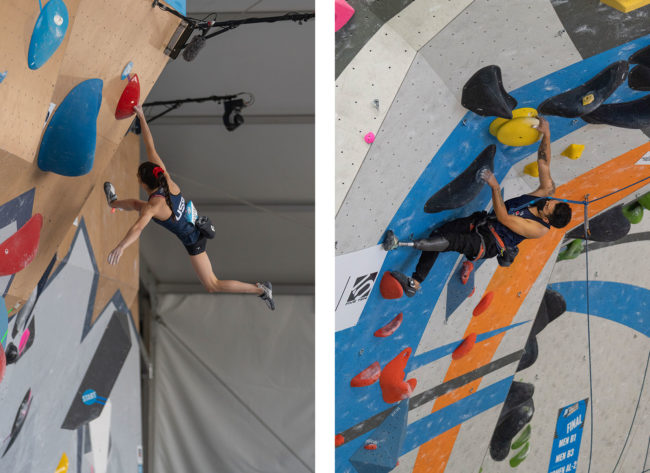
As a small gym owner who is interested in learning more about future expansion, the majority of the educational sessions I attended fell into the Finance & Business category, including a session on scaling your business which was led by John Pilkington of Grasshopper Industries. His expertise as someone with an engineering background is to take the chaos of everything that happens within a business and organize it into a map of repeatable processes. This allows you to know what’s happening to get a particular task done, evaluate and prioritize the high-value tasks, and develop processes to encourage growth. Pilkington’s background in manufacturing can be directly applied to those in hold production, wall production and gear manufacturing, but the lessons can be applied by gym owners and managers as well when hiring and training staff or managing finances. Not only do these processes allow for growth but, if and when something goes wrong, there is something to look back to and identify where it went wrong. Without going much more into it, I’ll leave you with Pilkington’s two book recommendations so you can start process mapping on your own:
- Traction: Get a Grip on Your Business (by Gino Wickman)
- Lean Thinking: Banish Waste and Create Wealth in Your Corporation (by Daniel T. Jones)
Two other Finance & Business sessions I attended were more specifically targeted at those of us running climbing gyms. Both were conversational sessions, with the bulk of the time spent in troubleshooting, Q&As, and having conversations around specific issues with other climbing industry professionals. On the panel were Kristin Horowitz (CEO of The Pad Climbing), Matt Roberts (CEO of 5.Life), Johnny O’Brien (Co-Founder and Equity Sponsor of HighPoint Climbing and Fitness), Jake Crine (owner of Übergrippen) and Joel Graybeal as the session monitor (Managing Partner of Triangle Rock Club).
Since these sessions were centered around who was in a given group and the questions that were asked, I can only leave you with a few highlighted themes that came up repeatedly. Firstly, be flexible with your approach. If something isn’t working, go back and figure out where in the process it went wrong. Evaluate if the process is broken or if you skipped a step. Do better next time. Secondly, don’t skimp on professionals or you will create more hassle and it will ultimately cost you more. This applies to lawyers, CPAs, commercial realtors, etc. Thirdly, your staff are the backbone of your organization and team culture is everything. As an owner/manager, you need to be intentional about building the right team and take the time to hire the right people. If someone isn’t working out, don’t be afraid to do the hard thing and let someone go for the sake of the overall team. And lastly, perhaps the greatest overarching theme of these sessions―and the entire weekend―was the value of creating a network with other people in the industry. Nothing will help you more than having continued access to counterparts (people who hold a similar role as you do) at other gyms, so you can bounce ideas off each other.
While competition is increasing in this industry with more and more gyms popping up, I prefer to take a ‘rising tide lifts all ships’ approach and believe that more gyms means more climbers, more jobs, more resources, and a stronger industry overall. The annual CWA Summit embodies this spirit and I look forward to future events and conversations.
About the Author
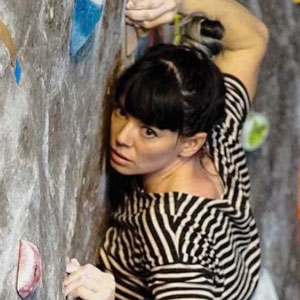 Jamie Strong, CBJ Marketing Coordinator, has been working in graphic design and marketing for about a decade. She is a co-owner of a climbing gym, a youth climbing coach, and a certified yoga instructor. Jamie holds a master’s degree from University College London and a bachelor’s degree from Missouri State University. She spends her weekends and vacations traveling to climb throughout the US.
Jamie Strong, CBJ Marketing Coordinator, has been working in graphic design and marketing for about a decade. She is a co-owner of a climbing gym, a youth climbing coach, and a certified yoga instructor. Jamie holds a master’s degree from University College London and a bachelor’s degree from Missouri State University. She spends her weekends and vacations traveling to climb throughout the US.
Where Routesetting Is (Hopefully) Heading
By Devin Dabney
This year’s CWA Summit was my first, and there was a lot to take in. Truly, the experience was overwhelming in all the best ways, a cornucopia of climbing companies, comrades and conversation. And from the first time I checked into the Salt Palace, all the way until my final conversation with KAYA CEO Kim Ang at the Salt Lake City Airport before boarding our respective planes, I learned a lot about where climbing is headed—particularly routesetting.
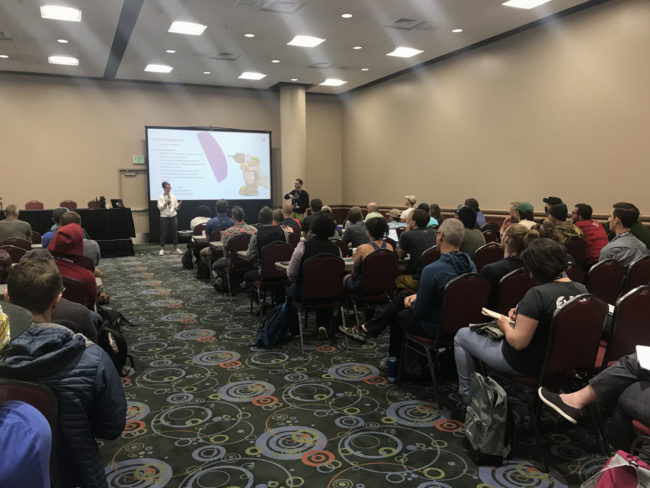
1. The role of ‘routesetter’ is evolving, and it’s all the better for it
Routesetting has come a long way since its origins in the first climbing gyms. It took a quantum leap ahead in the 90s, having evolved from a volunteer side role into a potentially viable career, with opportunities for travel, collaboration and professional development. While those components still have a long way to go, I believe we’re about to experience a second quantum leap: an industry-wide shift in the way routesetters work and what roles they fill. Several presentations at the Summit highlighted how difficult routesetting is on one’s body and mind, and that many setting teams are either abandoning the five-day workweek or adjusting their workload so they are not setting every day, making more time for forerunning, maintenance, and other often invisible tasks that comprise routestting.
Additionally, many gyms report their setters embracing a larger role as community leaders—no longer just grip-slingers, but instead often teaching classes, hosting meetups, and even coordinating events within their communities. I believe this shift more accurately reflects the demanding-but-rewarding role as a setter and, as gyms evolve and expand, the title of “routesetter” will continue to expand alongside them. Initially, this was a strategy for retention, but now it’s become one of refinement, as the industry actualizes the full spectrum of what a routesetter embodies. They have always been de-facto community leaders, so if the climbing industry shifts to help them more fully embrace that role, we will be rewarded with setters who are healthier, set longer, and become more involved in their gym’s success.
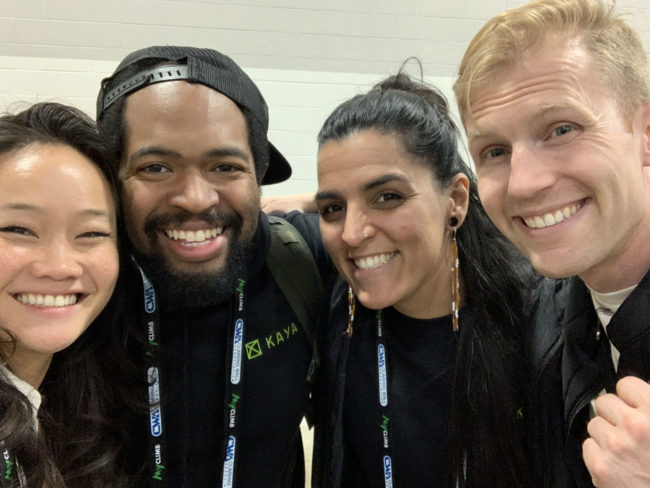
2. Boards will play a larger role in a gym’s routesetting offerings
As climbing continues to grow, the gap in experience only continues to widen; the pros keep getting better, and the newbies keep getting greener, coming from all walks of life with all levels of prior athletic experience. It’s oftentimes very difficult to set for such a wide swath of climbers in a commercial gym. But from what I saw at the CWA Summit, board companies like Grasshopper and Kilter aim to take some of that workload on—and by design.
I recall a particularly exciting conversation with Boone Speed, co-founder of Grasshopper, about how his vision for their boards addressed this growing spectrum of climbers. The popular training boards in the industry each have their advantages, and he mentioned how theirs was designed to serve both extremes of climbing experience and does so by not only having an adjustable-angle wall (which I think will be industry-standard for boards in the future) but also by having a wide array of hold types and qualities—from friendly two-pad jugs to monstrous slopers that reportedly even Nathaniel Coleman can grease off of (at the steepest angle, of course).
I see a future where setting teams will take full advantage of these boards in their distribution, putting up problems and circuits for brand new climbers, nails-hard crushers, and everyone in between. This will work especially well for large gym chains, as each gym that has a board will now be able to enjoy their setters’ problems across the country. Setting teams will no longer need to toil over barely being able to put up a V12 just to have their strongest climbers devour it in a session, or wonder where they’re going to get the space for five more V0s. With infinite permutations and combinations, boards like those of Grasshopper, Kilter and others can—and will—take a massive load off of setting teams across the world.
3. Routesetters are seeking better workplace fits—and for good reason
Companies all across America are struggling with employee retention, and climbing gyms are no different. Routesetters are not only leaving their gyms, but a few are leaving the industry altogether, seeking out other opportunities. While I can’t say for certain what the most common cause is, I can tell you from dozens of conversations I had at CWA with my setting comrades that a lot of them had a massive shift in perspective due to the pandemic; many setters had their facility closed for a long time and, in that break, re-prioritized what was important to them and what kind of job they wanted to have. Almost every setter I reunited with at CWA is in a different place than they were pre-pandemic, most of them moving to another gym, but some of them switching roles or even opening facilities of their own.
That being said, I don’t think gyms need to be worried about a shortage; there are still plenty of setters available, and many more aspiring setters waiting in the wings to be chosen (especially non-males and people of color). However, this new generation of setters is going to be far more discerning about what kind of roles they take, asking questions such as “Do you have benefits?” “What’s your daily quota?” “Is there a lift?” and too many others to list. Keep in mind that this is not a bad thing, but a cause for celebration: It means that routesetters are becoming more professional and, in return, are expecting that same level of professionalism from their place of work. Together, routesetters and climbing gyms will push each other to new heights of excellence and create a world where both are getting what they want…and both parties will be all the better off for it.
About the Author
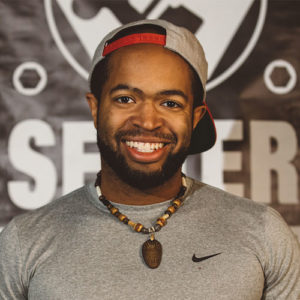 Devin Dabney, CBJ Contributor, is a professional podcaster, writer and music producer who lives in Indiana. In addition to CBJ, he also writes for The Climbing Zine. Devin has spent over a decade working in the climbing industry in a variety of roles, including head routesetter, competitive youth coach, personal trainer, event coordinator and community ambassador. When he isn’t making music, climbing, drawing or traveling, you can usually find him playing video games or grabbing a beer with his friends.
Devin Dabney, CBJ Contributor, is a professional podcaster, writer and music producer who lives in Indiana. In addition to CBJ, he also writes for The Climbing Zine. Devin has spent over a decade working in the climbing industry in a variety of roles, including head routesetter, competitive youth coach, personal trainer, event coordinator and community ambassador. When he isn’t making music, climbing, drawing or traveling, you can usually find him playing video games or grabbing a beer with his friends.
The Importance of Listening, Asking Why and Testing in Coaching
By Naomi Stevens
This year at the Summit, I was lucky to listen to several well-respected coaches in climbing, including Alex Bridgewater, Steven Bechtel and Dr. Tyler Nelson. All experts in the craft, it was refreshing to see the focus placed on both soft skills, such as communication, and hard skills, such as program design, for both youth and adult clients. There are so many lessons from these sessions that we as coaches can put into practice, but here are some that stood out to me.
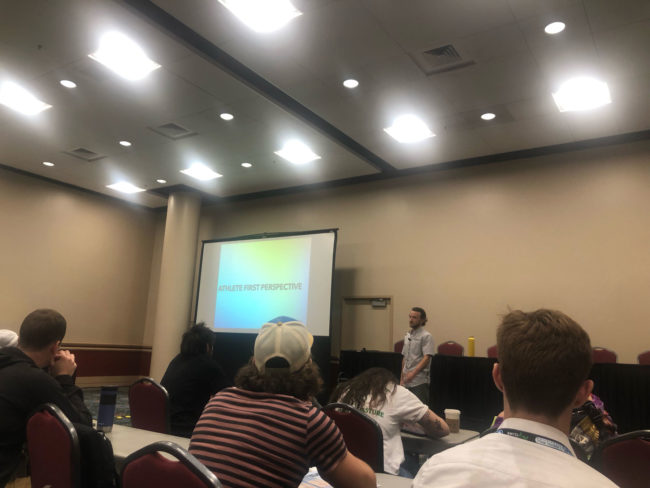
Don’t Talk, Just Listen
According to Bridgewater, “most of coaching is the way you talk to people.” Often viewed separately, he encouraged us to recognize the intersection between personal and professional values to become a more transparent and effective coach. We can start by asking ourselves questions that dig deeper: Who do you admire most in your life, and why? How do you behave in the gym? At the cliff? How do you rest and recover? How do you react to challenging situations? Do you let failure get in your way? These questions help us understand our strengths, weaknesses, priorities and biases that may inhibit a client’s success. The answers can also help us relate our unique experiences to our clients to better build a foundation of trust.
Building that foundation is as much about what we add as it is about what we remove. “Life is full of distractions,” Bridgewater said, stressing the importance of keeping the attention on the client. He suggested keeping the cell phone away during the session or using a notification silencing application for remote sessions. He also recommended showing the athlete that they have our full attention by using both verbal cues, such as affirmations, and non-verbal cues, such as welcoming body language (posture, head nods, gestures, etc.) and matching the client’s demeanor (facial expressions, level of eye contact the client is comfortable with, etc.). While listening, “to some degree, you have to be a chameleon as a coach,” said Bridgewater.
It’s important to figure out who the athlete is as an individual too. Tools like problem-free talk, open-ended questions and solutions-focused thinking can help. “We all benefit from better communication skills,” Bridgewater said. He recommended developing these skills by working with our own coach, which can help create empathy for the client. As he reminded us, “there are positive things that are happening all the time…successes can be really small.”
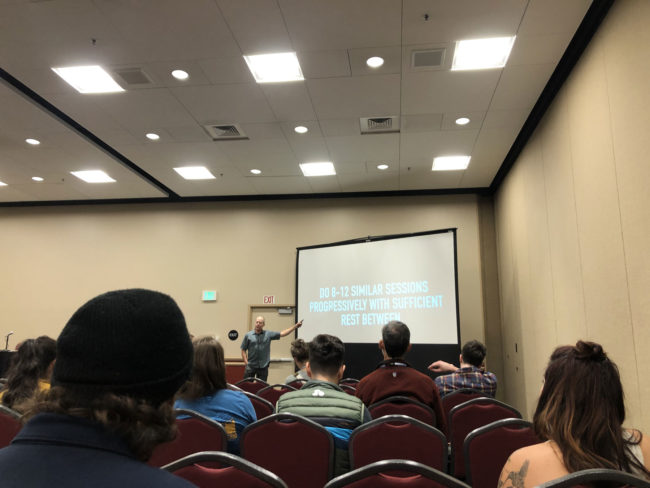
Ask Why First
Before writing a training block for an athlete, as coaches we should always first ask “Why?” What are the athlete’s greatest needs? What is the desired outcome of their training? Why are we adding X, Y and Z? What are the limiters that are showing up? According to Bechtel, a training block should focus on 1 to 2 specific, measurable goals. “Chasing all goals gets you none of them,” Bechtel said. “Non-specific goals lead to non-specific outcomes.”
Each training session should thus have a specific focus, such as strength, power, maintenance or recovery, as well as a planned intensity. Bechtel uses the hierarchy of session planning to then determine the exercises that serve that specific goal, beginning with the repetitions (or number of moves) required to meet the end goal, and next defining the sets (number of problems), load/intensity (grade), rest, and exercise (type of climbing) for the athlete.
A key part of planning the intensity is factoring in sufficient rest. In between blocks―often 4 to 8-week training periods focused on improving a specific factor, consisting of 8-12 similar sessions that progress with sufficient rest―Bechtel suggested taking 2-4 days off before moving into the next block. We can also change the stimuli/details of training to avoid burnout, injury, and adaptation plateaus. Ultimately, training an athlete’s limiter should happen long before their performance phase. If we’re cramming before a competition, it’s already too late.
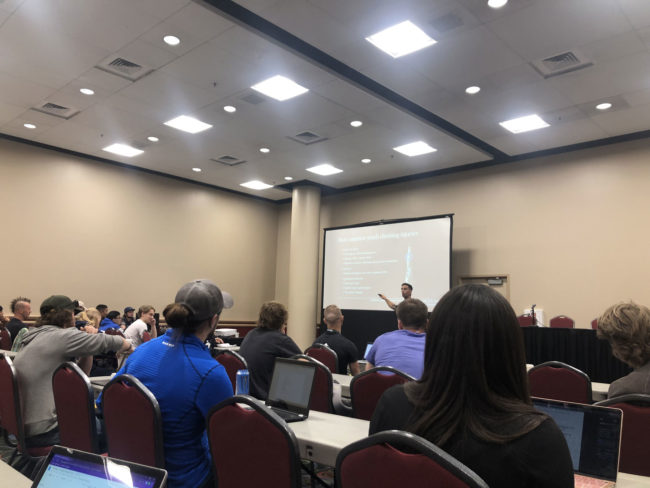
Learn Through Testing
Injury prevention is especially vital when it comes to strength training for our youth teams, as the most common injuries in youth climbers are “repetitive overload injuries,” said Dr. Nelson. These injuries stem from highly repetitive climbing movements, high-volume training sessions and multiple overlapping competitive sports. Injuries in the hand are the most common for youth climbers (especially ages 15 to 19, when muscles and tendons progress at very different rates), comprising 21% of their injuries, which are often caused by excessive crimping, double-dyno campus boarding, weighted pull ups and high-volume speed climbing training.
According to Dr. Nelson, “The answer for reducing injury risk is education.” We can’t prevent an injury by applying one lesson alone, but we can reduce the risk by modifying multiple activities, such as practicing landing mechanics for falling off bouldering walls, ensuring climbing volume and fatigue is appropriate, and training finger strength isometrically. And essential to making the right modifications is educating ourselves through research―including our own testing.
Dr. Nelson recommends isometric testing for youth teams because it’s relatively simple to administer, poses minimal injury risk, and is efficient for teams to use. Additionally, isometric tests can “detect subtle changes in strength,” while also evaluating force-time characteristics. This testing can occur every 3-4 weeks as a strength training day, or it can be used daily to monitor fatigue. Coaching is ultimately an evolving science, so we’re never done learning.
After reviewing the updated position statement on youth strength training from the National Strength and Conditioning Association (2019), Dr. Nelson provided some helpful guidelines for youth climbers, specifically. Some recommendations included providing qualified instruction and supervision, starting with light loads and focusing on individual technique, doing a dynamic warmup and static cool down, and progressing athletes individually. Each individual athlete puts their trust in our hands, and it’s a responsibility we always need to take seriously.
About the Author
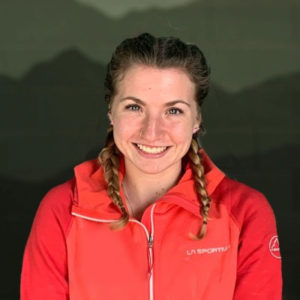 Naomi Stevens, CBJ Contributor, is a personal trainer and a routesetter who has also worked at climbing gyms as a youth team coach. After starting college at Colorado State University in 2017, she wanted to make new friends and found climbing, fell in love, and now climbing dictates most of what she does. Naomi earned a bachelor’s degree in Ecosystem Science & Sustainability, and when not climbing she enjoys baking, gardening and crafting.
Naomi Stevens, CBJ Contributor, is a personal trainer and a routesetter who has also worked at climbing gyms as a youth team coach. After starting college at Colorado State University in 2017, she wanted to make new friends and found climbing, fell in love, and now climbing dictates most of what she does. Naomi earned a bachelor’s degree in Ecosystem Science & Sustainability, and when not climbing she enjoys baking, gardening and crafting.
Responsibility & Opportunity in a Growing Industry
By Scott Rennak
It feels a bit cliche to say my takeaways of this year’s Summit can be summed up by the two words responsibility and opportunity. After all, isn’t that the story behind every trade show or conference anywhere? The responsibility to our customers, employees, investors and community? The opportunity to evolve our businesses to better serve all of those stakeholders? Why else would we gather?
Yet the feeling was refreshing. After climbing for nearly 30 years and working in the business for 25 of those years, I can say it wasn’t always like this. So to hear promises and explanations of responsibility from nearly every corner of our growing industry was exhilarating. Walking away from this year’s event, I’m convinced that we, the climbing industry, are aligned to tackle the future―whatever it may hold.
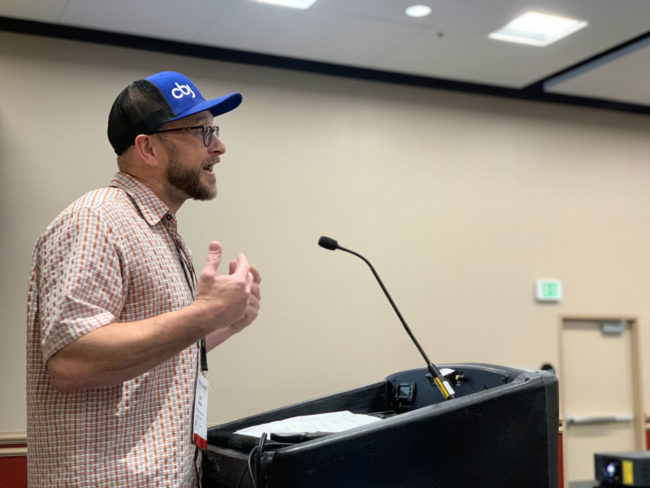
Why do I feel this way? So many examples, but here are just a few:
- Caring for our outdoor climbing areas through the new Access Fund + CWA dual membership.
- Caring for youth in climbing through the SafeSport + USAC partnership.
- Caring for climbers with disabilities through programming such as Adaptive Climbing Group’s.
- Caring for routesetters through workplace improvements, education, and the forthcoming CWA Routesetting Guide.
- Caring for our regional business communities through coalitions like WICC and CICC.
- Caring for our vendors with patience and understanding as they navigate supply constraints to deliver the products we need.
- Caring for our planet with sustainable supplies like Binary/Flashed’s 100% recyclable holds.
Then of course, like all great trade shows, the 2022 Summit had a strong focus on pursuing opportunity. The reason we are able to gather like this is that both brands and professionals share their wares to create opportunities for your business. Those wares could be climbing walls or holds or software, or perhaps knowledge gained through a long practice. The purpose behind the booths and speakers has always been to create opportunities to serve our customers, and this show was no different.
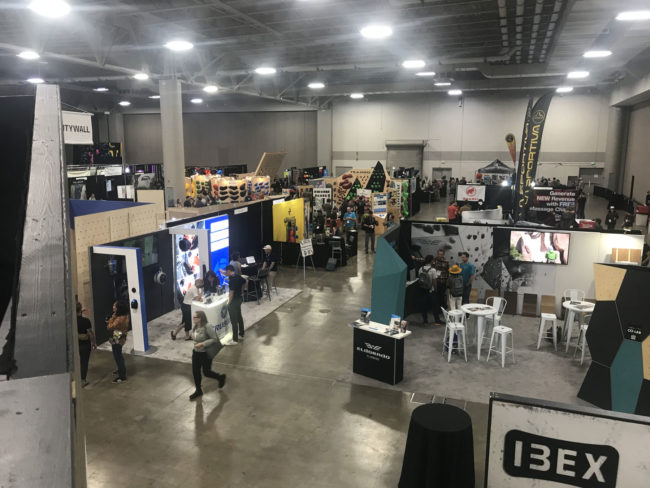
Some of the great new opportunities I saw included:
- Serving every visitor and staffer with fresh air from ClimbLab, StaticAir and Camfil.
- Serving all climbers with countless new shapes of holds, macros and volumes from too many brands to list.
- Serving auto belay users with “catch-and-hold” functionality from TRUBLUE iQ+ and safety alarms like Nicros ABSS.
- Serving members with a guidebook and training program in their pocket through apps like KAYA/Plastick, MyClimb and Climb Time.
- Serving parties and new visitors with lasting memories to take home using DNP’s Action
Capture.
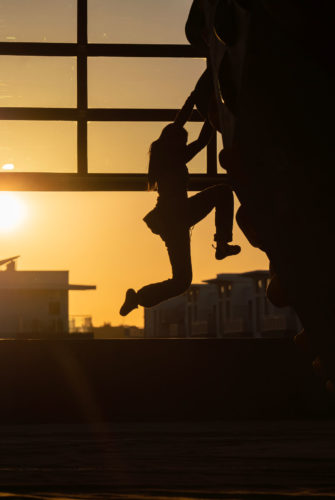
Finally, it would be remiss to ignore the challenges we face and were discussed widely. Those challenges run the gamut, from delays and rising cost of supplies, increased pressure from real estate and staffing, and of course the ongoing Covid pandemic. In the keynote, Kevin Jorgeson reminded us all that “building anything from scratch is hard”. And while it may be tempting to add “and it’s never been harder”, I would counter with “it’s also never been easier,” since our industry has never before had as much collective knowledge and experience as we have at this moment today. True there are real challenges, but as climbers we are accustomed to tackling challenge. The opportunity to serve our communities―all of our stakeholders―with responsibility and compassion has never been greater.
About the Author
 Scott Rennak, CBJ Publisher, has been promoting indoor climbing since 1997 when he bought Climb Time of Cincinnati and started what would become the American Bouldering Series. Since then he has helped hundreds of small businesses grow, including climbing gyms and manufacturers. He is available for projects through Reach Climbers. In his free time he still scours nearby hills for fresh boulders, skis all year, and is a dedicated father to his two young children.
Scott Rennak, CBJ Publisher, has been promoting indoor climbing since 1997 when he bought Climb Time of Cincinnati and started what would become the American Bouldering Series. Since then he has helped hundreds of small businesses grow, including climbing gyms and manufacturers. He is available for projects through Reach Climbers. In his free time he still scours nearby hills for fresh boulders, skis all year, and is a dedicated father to his two young children.

Climbing Business Journal is an independent news outlet dedicated to covering the indoor climbing industry. Here you will find the latest coverage of climbing industry news, gym developments, industry best practices, risk management, climbing competitions, youth coaching and routesetting. Have an article idea? CBJ loves to hear from readers like you!




